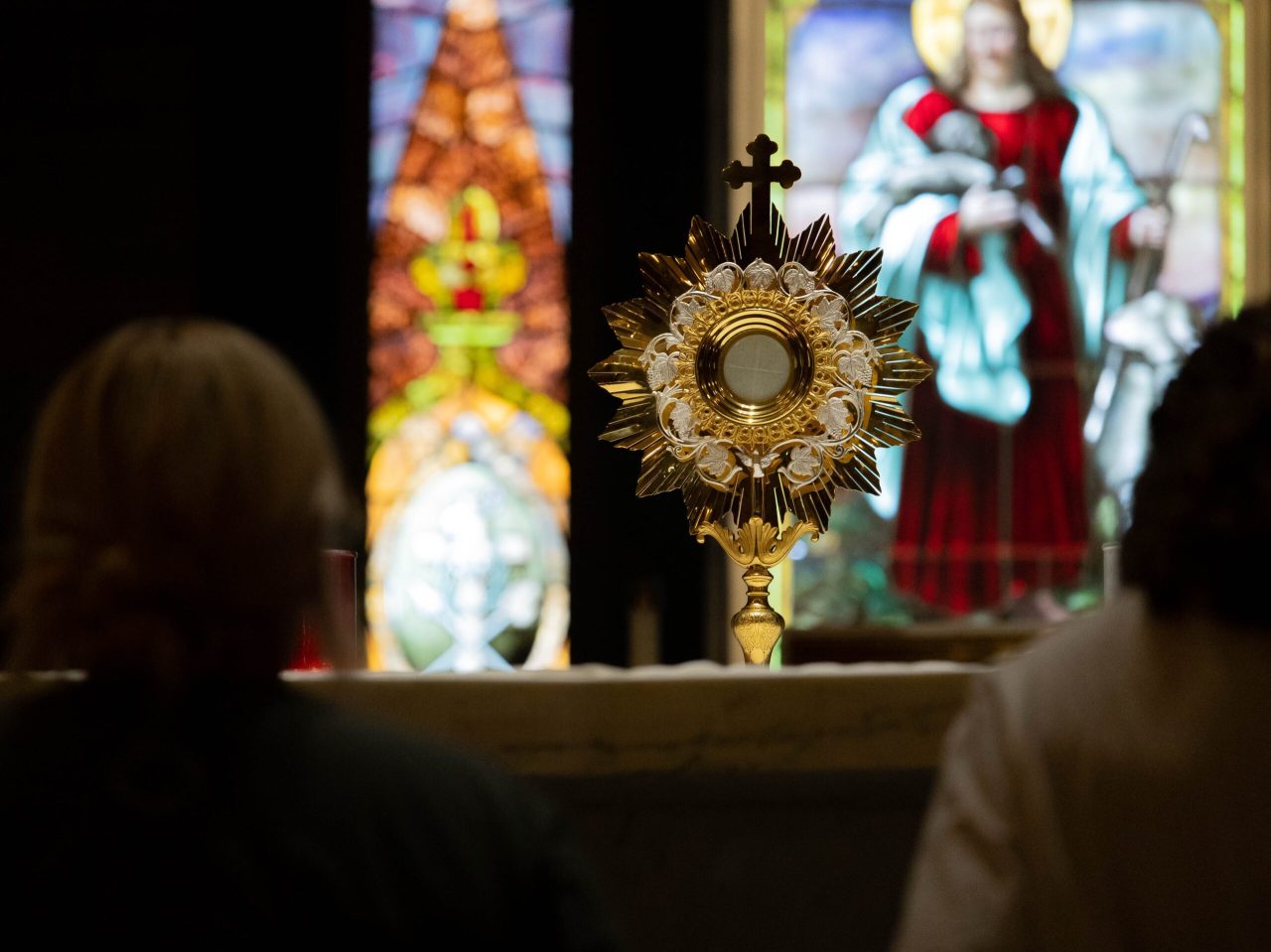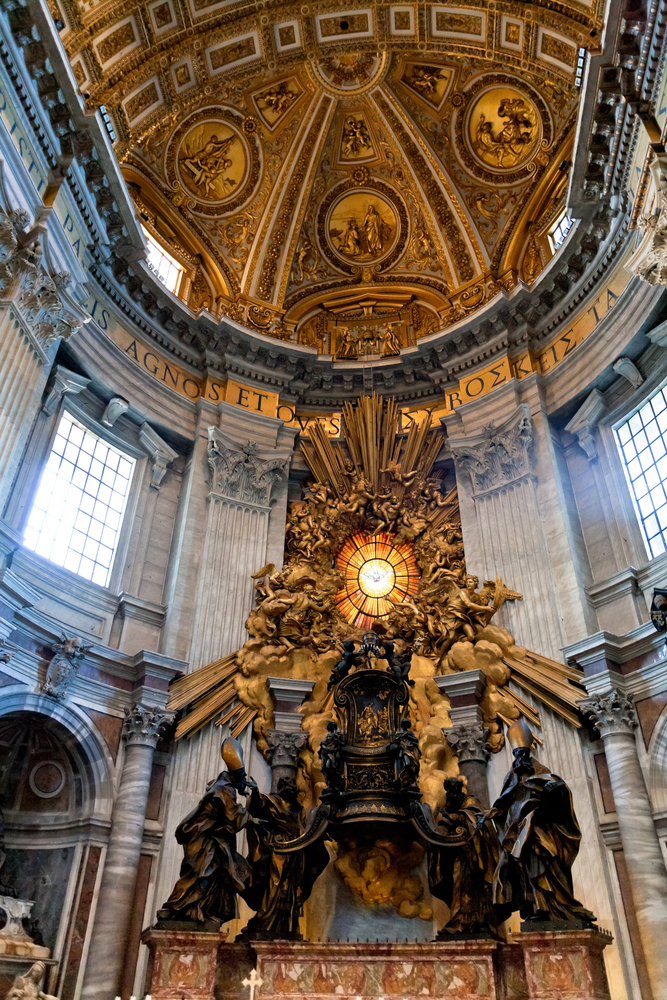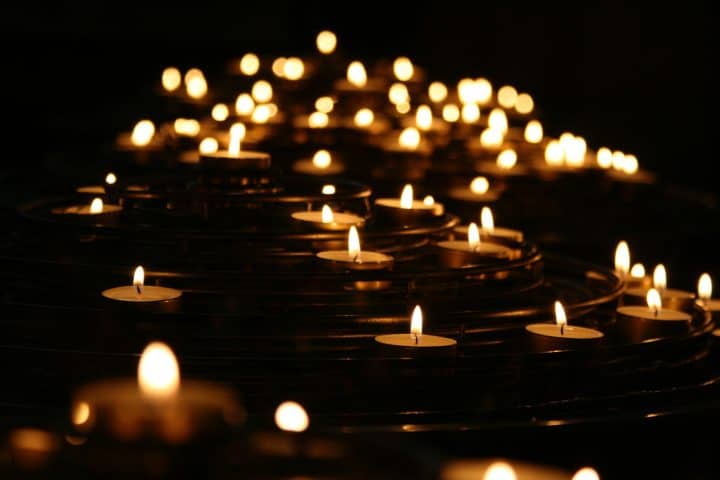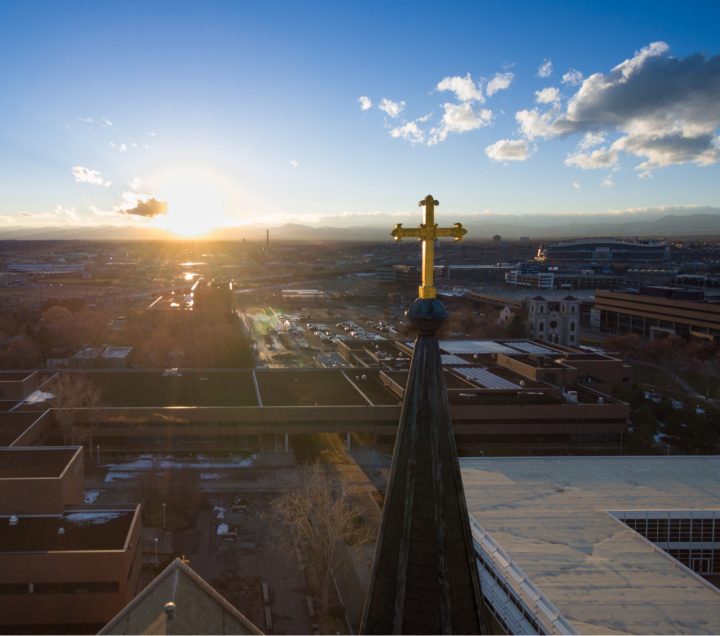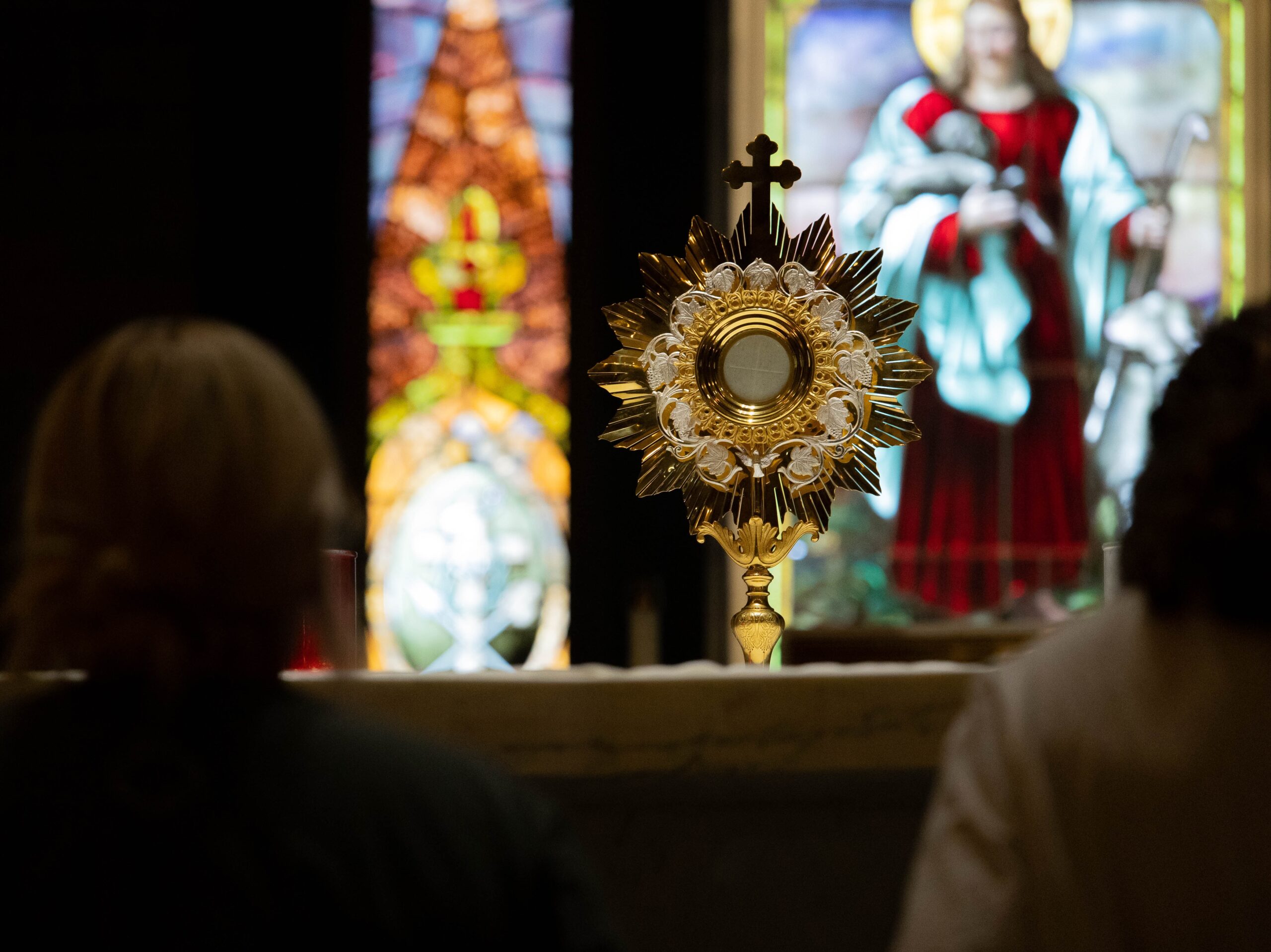
We are in the midst of our national Eucharistic revival, and the dates for the National Eucharistic Pilgrimage, culminating in the National Eucharistic Congress, are approaching quickly. Dioceses and parishes around the country are offering events and programs. Apostolates and institutes have made their contributions through pilgrimages or resources. All of these have the potential to transform individuals, parishes, dioceses, and the Body of Christ from sea to shining sea and across the amber waves of grain.
While all of this activity is taking place, we must keep in mind that the objective is to maintain Eucharistic amazement after all the major events have passed, after the luster has worn off the new and exciting programs. Is there a way that individuals and families can kindle Eucharistic devotion and wonder for weeks, months, years, and generations into the future? I suggest two to provide fuel for this lifelong journey. The first is for individuals and families to make a pilgrimage to the Shrine of the Most Blessed Sacrament. The second is to learn and pray the Stations of the Holy Eucharist.
In the midst of our national Eucharistic revival, there are two ways that individuals and families can further kindle Eucharistic devotion. The first is for individuals and families to make a pilgrimage to the Shrine of the Most Blessed Sacrament. The second is to learn and pray the Stations of the Holy Eucharist. Both will provide powerful fuel for this ongoing journey through the weeks, months, years, and generations into the future.
The Shrine of the Most Blessed Sacrament is nestled on nearly four hundred acres of rolling farmland in north-central Alabama, between Huntsville and Birmingham. Mother Angelica, foundress of EWTN, chose that location initially for the Our Lady of the Angels Monastery. Soon thereafter, though, the site was purposed to the development of a “temple” to honor of the Divine Child Jesus. The Lord provided miraculously for the funding and building of the new shrine, which was dedicated just before the turn of the new millennium. For nearly a quarter-century, this site has offered daily Mass, Eucharistic Adoration (in a monstrance over seven feet tall!), confessions, and other opportunities for peaceful communication and communion with the Lord.
One of the highlights of the shrine is a life-sized (or nearly so) Nativity creche that is present and available throughout the year. Mother Angelica reasoned that the people need to be reminded that the Word can become flesh in each of us, every day, regardless of the season. Sitting in the quiet cave hewn out of a hillside with the Holy Family and shepherds and Magi and barn animals, just as it would have been in Bethlehem, allows for fruitful meditation. This is especially true for parents who make the effort to bring children on this pilgrimage.
Another wonderful feature of the experience is the Pope St. John Paul II Eucharistic Center. This exhibit offers pilgrims an interactive encounter with the Church’s teaching on, and devotion to, the Eucharist. The experience includes with a model of a Jewish synagogue in Nazareth, like the one at which Jesus would have taught at the beginning of his public ministry (see Lk. 4:16-21); a model of the cenacle room in which Jesus would have celebrated the Passover meal that became the Last Supper (see Lk. 22:7-23); video lessons about eucharistic miracles; and biographical information about eucharistic martyrs, including some who were eleven and twelve years old.
At the center of the building is a fantastic sculpture that combines several biblical images that point us to the Eucharist. The base of the sculpture is an octagonal well, meant to symbolize the “living water” that Jesus offered to the woman at the well (see Jn. 4:14-15). Inside that well, at the bottom of the sculpture is a mountain, which symbolizes the mountain on which Abraham went to sacrifice Isaac, the same mountain on which Jerusalem was established by King David as the capitol of Israel. At the top of that mountain is a replica of a portion of the Temple in Jerusalem, along with a panoramic relief of the holy city. At the pinnacle of the whole sculpture sits a lamb in glory, with blood (red water, really) pouring forth from its pierced side and into a chalice.
Paintings of the Stations of the Eucharist, illuminated with gold paint, conclude the exhibit and tour. The Stations of the Eucharist is a devotion that walks pilgrims through episodes of salvation history, pointing forward to the heavenly eucharistic banquet. Those twelve episodes are: Melchizedek, The Jewish Passover, The Manna in the desert, the Old Temple in Jerusalem, Elijah and the Hearth Cakes, Bethlehem (“House of Bread”), the Wedding Feast at Cana, Multiplication of the Loaves, The Bread of Life Discourse, and the Last Supper, The Road to Emmaus, and, finally, The Marriage Supper of the Lamb. Taking up this devotion is sure to help any person become more familiar with Sacred Scripture; and it is sure to enkindle in all the faithful a deeper love for the Word-made-Flesh, who feeds us through the Eucharist.
Making a pilgrimage to this anointed place, along with learning and practicing this wonderful prayer devotion, would be beneficial for any individual or family, especially during these years of Eucharistic revival!
Photo by Matea Gregg on Unsplash

